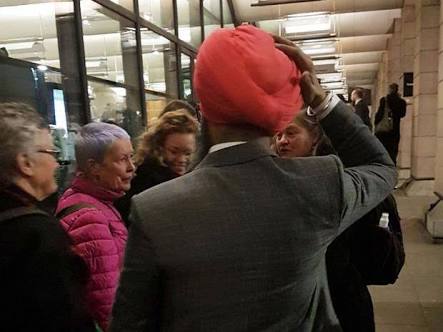



In the last 55 years, politics in Punjab has mainly revolved around politics of doles and appeasements that in turn wreaked havoc with the economy of the State bringing it down from the top spot in the country to the also ran category.
“After witnessing two partitions since 1947, the State is without its own capital, besides it has lost control over the prestigious hydel projects like Bhakra and Beas, its rivers waters are being diverted in utter violation of the conventional Riparian laws and several other prestigious institutions the State either acquired as a part of partition settlement or built on its own after 1947 like Panjab University, Postgraduate Institute of Medical Education and Research, Punjab Engineering College, etc., etc. are managed by the Union government or the Centre.”
For those, who are worried about the deteriorating fiscal health and social fabric of this border agrarian State, yes, “Punjab Model” should be a guiding factor for its electors in determining their future ruling political parties or leaders.
But then what is the “Punjab Model”?
Both the Punjab Pradesh Congress Committee chief Navjot Singh Sidhu and the Aam Aadmi supremo Arvind Kejriwal are going around with their “Punjab Model” in soliciting support of the worried voters as the State is on the verge of both political and financial bankruptcy.
Their models may not be in line or consonance with what Punjab needs today. They are mostly talking about models broadly to appease some sections of voters without dealing with the issues that have scripted tormenting history of the State since the 1947 partition in general and the reorganization in 1966 in particular.In the last 55 years, politics in Punjab has mainly revolved around politics of doles and appeasements that in turn wreaked havoc with the economy of the State bringing it down from the top spot in the country to the also ran category.
After witnessing two partitions since 1947, the State is without its own capital, besides it has lost control over the prestigious hydel projects like Bhakra and Beas, its rivers waters are being diverted in utter violation of the conventional Riparian laws and several other prestigious institutions the State either acquired as a part of partition settlement or built on its own after 1947 like Panjab University, Postgraduate Institute of Medical Education and Research, Punjab Engineering College, etc., etc. are managed by the Union government or the Centre.
In addition, there are other issues, like inclusion of Punjabi speaking areas, that prompted the State to demand “autonomy” through the Sri Anandpur Sahib resolution. Many elections have come and gone but these core issues or demands never made it to the top of the agenda or election manifesto of any political party. The coming elections are no different.
When and who is going to fight for these long-standing demands of Punjab?
Looking through the history of the State after Independence in general and reorganization in 1966 in particular, grabbing power has been the only agenda of the political parties or their leadership.
None other than Darshan Singh Pheruman of Akali Dal (Pheruman) made a sacrifice to press for acceptance of these demands. His sacrifice, however, went waste for lack of support from the mainstream parties.Unfortunately, these issues still do not figure in any of the “Punjab Models” being projected by Congress or AAP leaders. Should voters presume that these issues stay consigned to the history books and would not be raised or fought for.
Let us talk about the Kejriwal or AAP’s “Punjab Model” of governing the state after polls. Like Sidhu’s model, it is primarily about the current issues facing the State. He is promising justice in sacrilege cases, jobs to youths and corruption-free governance. With his model, he asserts, will help hard working people of the State to bring his party to power to break the friendly “partnership” between the Badals and the Congress. He maintains that his Punjab model will have a 10-point agenda that will include free power to people up to 300 units per billing cycle and controlling the drug menace. The AAP, while trying to lure women voters, also wants regular financial support for them saying each woman above the age of 18 would be given Rs 1000 each every month.
On the other hand, Navjot Sidhu had been going around and promising Punjab with his 13-point Punjab model. His mainstay is restructuring the economy of the State by pulling it out of debt trap. His concept of a healthy fiscal model is to use internal resources in not only generating new revenue channels but also solving the problem of unemployment. For Sidhu, liquor, sand and bajri (gravel) could serve as wonder commodities in filling the empty coffers of the State. He has been promising to set up state-owned liquor besides sand and bajri corporations for mobilizing revenue enough to make the State cut its annual borrowing and be on its way to great financial recovery. Sidhu feels convinced that from liquor alone, Punjab could generate about Rs 25,000 crore of revenue. His model also includes setting up a regulatory commission to control the cable sector.
Other major contestants, including the Shiromani Akali Dal-Bahujan Samaj Party alliance, Bharatiya Janata Party-Punjab Lok Congress-Sanyukta Shiromani Akali Dal alliance, and the Samyukat Samaj Morcha have so far refrained from making public their “Punjab Models”.
Even if all the contestants – political parties or alliances – make public their models, what legal sanctity these pronouncements will have in the post-election scenario remains a million-rupee question.
(The author, a former editor of The Tribune, is a senior journalist. He can be reached at prabhjot416@gmail.com)





Be the first to comment